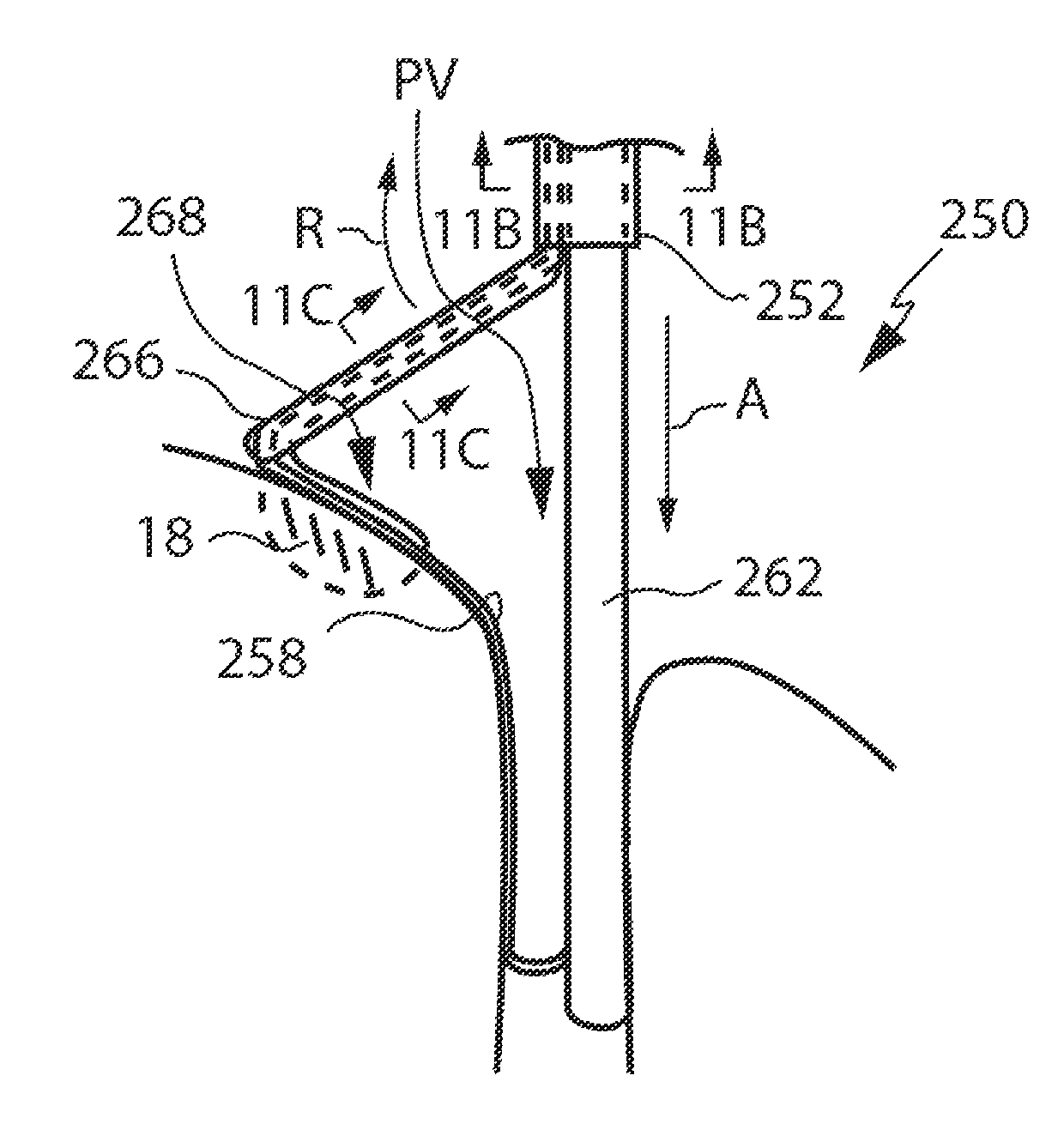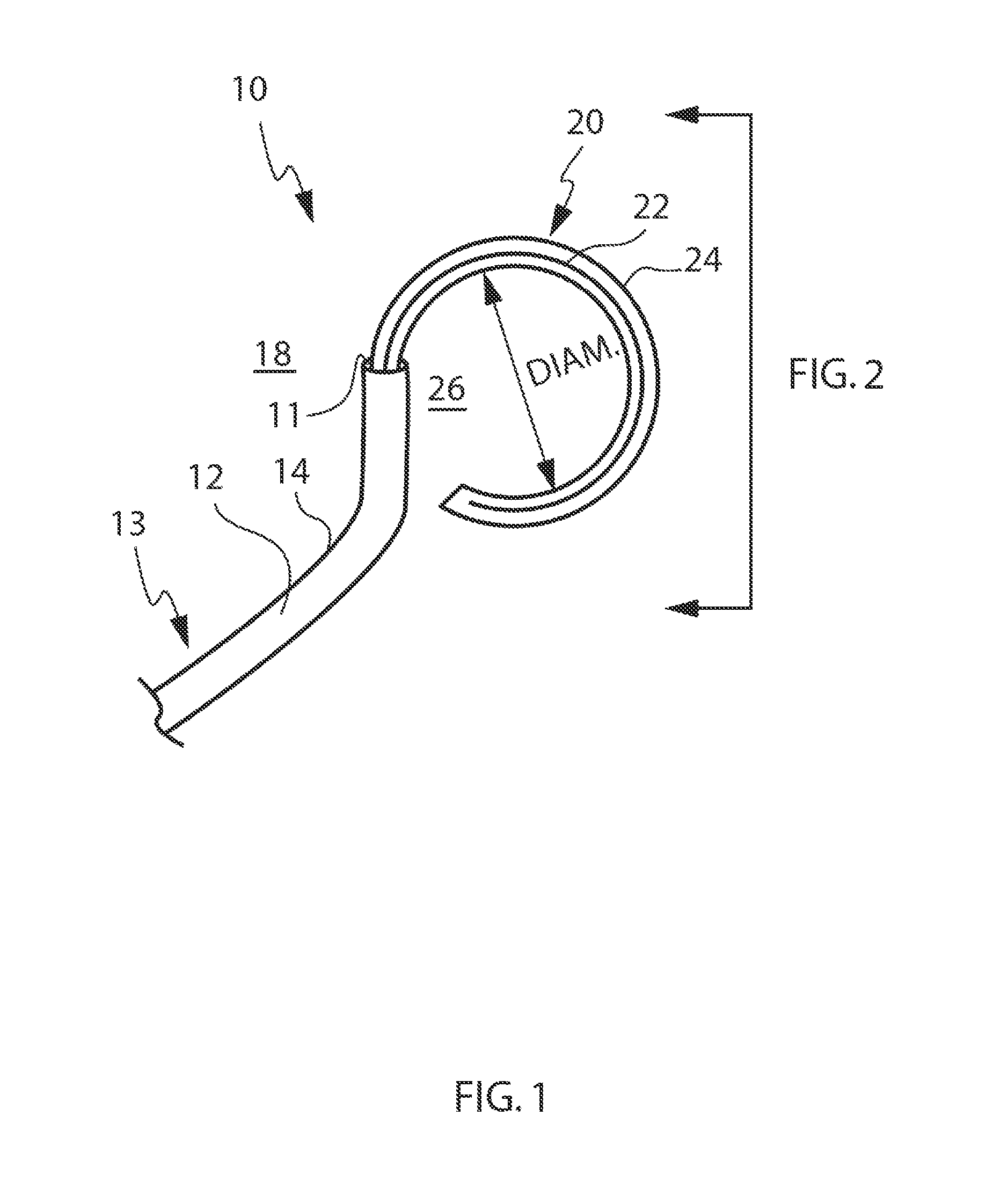AF occurs when something imparts a change to the electrical
signal received by the heart resulting in, for example, uncontrolled and uncoordinated beating of the atria.
While typically not fatal, the uncoordinated
heart beat associated with AF results in blood
pooling and clotting which, in turn, can lead to
stroke.
Problems of guidance and control of ablation devices within the heart are further exasperated when preformed as a minimally invasive ablation procedure on a
beating heart.
Moreover, the varying anatomic differences from one patient to another lead to greater challenges involving the steering and positioning of the ablating portion of an ablation
system within the
left atrium.
Additionally, procedures performed with such systems are more
time consuming since only a single small point
lesion is created at any given time.
While creating longer lesions allowing for faster procedure times when compared to point ablating systems, such linear ablating systems present additional challenges.
While all such ablation systems provide a corresponding specialized
advantage, they are generally problematic and present different challenges for the
end user, as discussed in more detail immediately below.
There are other limitations to point ablation systems.
This positioning or placement problem is exasperated during
beating heart procedures where the user must predict and work in
unison with cardiac movement when placing the ablating portion upon the
target tissue surface.
Another factor leading to placement problems is the fact that the endocardial surface of the
left atrium posterior wall, apart from the location adjacent to the
pulmonary vein ostia, can be quite smooth.
In practice, users of point ablation systems typically use costly support equipment to provide historic and current position information of the ablating portion with respect to anatomical cardiac structures and previously created lesions.
The support equipment, while useful, is extremely costly and requires additional personnel to operate, ultimately increasing procedure costs.
Other drag and burn systems require numerous accessories and more complex methods which require additional time to complete the desired
lesion set as part of the ablation procedure.
Aside from the inherent problems with point ablation devices, these relatively complex devices and methods require
additional procedure time which can lead to user fatigue, and ultimately an unsafe
working environment, as well as increasing procedure costs.
Still another problem with point ablation devices having ablating tip portions is the risk of perforation.
Excessive force, coupled with the application of ablative energy, may increase the risk of atrio-esophogeal
fistula, especially for radiofrequency point ablating systems.
Creating continuous curvilinear lesions with linear ablating devices, while in theory providing an ability to create certain
lesion patterns more quickly, is also problematic.
With linear ablating devices, especially
radio frequency based devices which, in theory, can create a more thin lesion line, due to viewing limitations during the procedure it is often very difficult to properly position the linear ablating portion in order to create the successive continuous linear lesions as part of a desired lesion pattern.
Such systems, however, in additional to the general problems stated above, require complex movements to ensure proper placement of the ablating portions of the devices for creation of continuous lesions, especially in a
beating heart procedure.
Such complex movements make it very difficult to determine whether successive ablations are continuous without the use of additional procedural support equipment or other accessories.
Another problem with most linear ablating systems is they require a user to manipulate the elongated ablating portion to a point parallel to and adjacent
target tissue.
This, in turn, limits the ability of the ablation
system to create a multitude of lesions as part of a desired lesion pattern.
Such devices are problematic since they put heavy burdens on delivery systems, requiring such systems to steer the ablating portions to a point parallel to and adjacent
target tissue.
Creating the broad range of lesions necessary for the treatment of
atrial fibrillation is very difficult with such systems, requiring a freedom of motion that is unavailable in the current offerings.
Such devices, however, are large in size and hard to properly place to ensure proper contact is made by and between the ablating portion and the target tissue, allowing the creation of the linear lesion.
As is discussed in more detail below with respect to other spiral devices, such systems do not have ablating portions which apply sufficient
contact force along the entire length of the ablating portion.
Moreover, such linear ablating devices as described above, due to the nature of their design, typically do not possess the necessary flexibility to be able to hold or retain the ablating portion adjacent to a target tissue while maintaining proper tissue contact, a necessity for
radio frequency based ablation devices.
Additionally, linear ablating systems do not build on the procedural strengths electrophysiologists have acquired and further developed over the course of time performing a great number of ablation procedures utilizing steerable ablating systems with point ablation tip portions.
While some areas in the left atrium, for example, are more readily accessible, other areas, such as near the junction between the
septal wall and the
ostium of the right superior
pulmonary vein, are not as easily accessible.
Placement of the ablating portion near a right pulmonary
vein ostium via a transseptal approach is especially challenging since such placement requires sharp
catheter bends near the transseptal opening along the
septal wall.
As with point ablating procedures described above, many times the user simply relies on costly lab equipment to try to guide him to a desired target tissue location.
These structures prevent the use of such devices for creation of associated linear lesions as part of a desired lesion pattern.
Such circumferential ablating devices also generally do not provide consistent circumferential contact between the ablating portion and the circumferential tissue surrounding the ostium, such contact being required for creation of a corresponding circumferential lesion.
For example,
balloon structures for cryogenic ablating systems are typically fixed in overall dimension and do not posses the flexibility needed to properly engage a circumferential region of tissue surrounding an ostium of a pulmonary
vein, the specific anatomic shape which can vary dramatically from patient to patient.
Radiofrequency ablating devices which rely on a continuous elastic or superelastic metallic structure, such as nitinol for example, for both placement and ablation are particularly susceptible to contact issues since these materials, despite their name, do not have the requisite flexibility to engage a continuous
tissue surface in order to create a continuous lesion therein.
While
thermal conduction may complete lesions associated with some of these problematic non-contact areas, not all may be resolved.
Nor is there a simple way to discover where the discontinuity lies since the exact degree of contact between the ablating portion and the target tissue, along the length of the ablating portion, is not readily known.
As with the
balloon structures discussed above, while the immediate devices possess the flexibility to longitudinally pass through a
guiding catheter and then take on a circumferential shape once within the left atrium, they are not flexible enough to be able to adequately engage the non-linear circumferential region of tissue consistent with the creation of a continuous lesion thereupon.
Most of such spiral ablation systems are also flawed due to their inability to apply requisite constant
contact pressure between the length of the spiral structures and the corresponding circumferential region of tissue.
However, such systems are problematic since they rely on a generally consistent
tissue surface along the radial path about the pulmonary
vein ostium.
However, such advancement, considering this lateral ablating approach, may jeopardize the continuity of the currently created lesion with previously created lesions.
Such systems are undesirable since ablation of the inner wall of the pulmonary vein can lead to
stenosis which, in turn, can then lead to serious respiratory problems including shortness of breath or dysnpea, severe coughing or hemoptysis,
chest pain and pneumonia.
 Login to View More
Login to View More  Login to View More
Login to View More 


